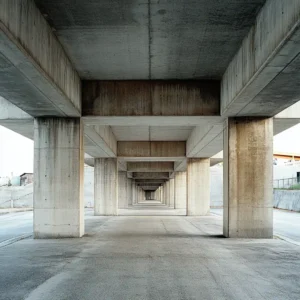Konstruksi Infrastruktur
Introduction to Fiber-Reinforced Concrete in Infrastructure
Fiber-reinforced concrete (FRC) represents a significant advancement in construction technology, combining traditional concrete with fibrous materials to enhance its structural integrity and durability. This article delves into the definition, classifications, and historical development of concrete used in infrastructure consttruction, highlighting the contributions of Fiberego in advancing this technology.

Definition and Classification of Infrastructure Concrete
What is Infrastructure Concrete?
Infrastructure concrete is a category of construction material specifically designed to build and maintain facilities such as roads, bridges, tunnels, and water treatment plants. It is formulated to meet higher durability and resistance requirements against environmental stresses.
Classifications of Concrete
Concrete used in infrastructure can be classified based on its strength, density, and the inclusion of additives or reinforcements such as fibers. These classifications help in selecting the appropriate type of concrete for different infrastructure projects.
The Role and Mechanism of Fibers in Concrete
Fibers in concrete improve tensile strength, reduce crack formations, and enhance impact resistance. When mixed into concrete, fibers act as a network of support, distributing loads across a broader area and improving the concrete’s structural properties.

Types of Fibers and Their Characteristics
Fiberego utilizes several types of fibers in concrete, each with unique properties suitable for specific infrastructure needs:
- Polypropylene Fiber: Known for its lightweight and resistance to chemicals and water. Ideal for concrete exposed to corrosive environments.
- Polyester Fiber: Offers excellent tensile strength and durability, used primarily in road and bridge construction for its fatigue resistance.
- Polyacrylonitrile Fiber (PAN): Exceptional in providing strength and thermal stability, suitable for high-temperature applications.
- Steel Fiber: Enhances load-bearing capacity and shear strength, commonly used in industrial flooring and tunnel linings.
- Cellulose Fiber: Improves fire resistance and insulation properties, often used in building applications where fire safety is a concern.

Applications of Fiber-Reinforced Concrete in Infrastructure
FRC is revolutionizing infrastructure projects with its enhanced performance. Applications include:
- Roadways and Pavements: Where resistance to heavy traffic and environmental conditions is necessary.
- Bridges: Where durability and minimal maintenance are crucial.
- Public Utilities: Including water and sewage treatment plants that require chemically resistant materials.

Construction Techniques and Challenges
While FRC offers numerous benefits, its integration into construction projects presents challenges such as uniform fiber distribution and ensuring proper bonding with the concrete mix. Advanced mixing techniques and adherence to strict guidelines are essential for optimizing the benefits of FRC.
Economic and Environmental Impact
FRC is not only cost-effective by reducing maintenance and repair costs but also environmentally friendly. Fibers like polypropylene and cellulose are often derived from recycled materials, contributing to sustainable construction practices.
Future Trends and Standards in Fiber-Reinforced Concrete
The future of FRC in infrastructure looks promising with ongoing research into new fiber materials and composite technologies. Standards and specifications are continually updated to reflect the latest advancements and ensure the consistent quality and performance of FRC.
Conclusion
The integration of fibers in concrete through technologies developed by companies like Fiberego is setting new standards in infrastructure construction. With continuous advancements in fiber technology and concrete composition, the potential for more resilient and sustainable infrastructure is vast.


